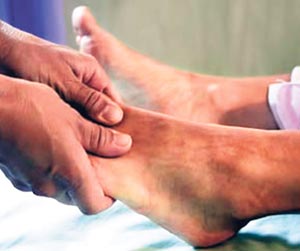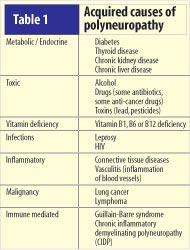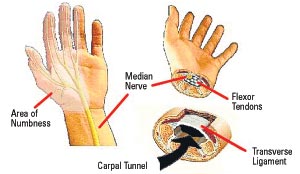When a patient says he feels like he is walking on cotton wool, Dr. Thashi Chang knows it’s not a sentimental metaphor. Instead it’s meant to be taken literally, as a sign that the nerves in the patient’s feet have begun to succumb to neuropathy.
The causes of neuropathy - a disease of the nerves - run the gamut from diabetes and cancer, to toxins and injuries, says Dr. Chang, Specialist Neurologist and Senior Lecturer in Clinical Medicine at the Faculty of Medicine of the University of Colombo.
This month, he speaks to Mediscene about how and why neuropathy occurs, and what, if anything, can be done to reverse its effects.
The body’s messengers
Beginning at the brain or spinal cord, nerves extend into every part of our bodies. They conduct information to and fro at blistering speeds. The electrochemical nerve impulses coordinate virtually everything the body undertakes, from deliberate movement, to essential but unconscious activities like breathing, blinking and blood circulation. “You have three types of nerves – sensory nerves, motor nerves and autonomic nerves,” says Dr. Chang, referring to the nerves that transmit information about sensory experiences, such as feeling of touch or pain (sensory), nerves that consciously control movements of muscles, such as those used in walking, grasping or talking (motor) and nerves that regulate biological activities, such as breathing, heart rate, blood pressure and sexual functions (autonomic).
 |
Nerves can also be categorized as spinal nerves and cranial nerves depending upon where they are deployed in the nervous system. Among the 12 pairs of cranial nerves for instance are nerves that control your facial expression, the movement of your tongue, of your eyes and your eyelids, as well as of your ability to swallow and speak.
Each nerve has its own specific function, so that damage to a single nerve will cause a specific loss of function, for instance, damage to the seventh cranial (facial) nerve can distort your smile. The spinal nerves control your upper limbs, lower limbs and trunk and manage such functions as walking and bending in addition to providing your brain with sensory feedback. When a nerve is damaged, you can experience a loss of control, along with sensations of pain, numbness or extreme sensitivity to touch. How long will it last? That depends on what exactly has gone wrong.
Progression of
neuropathy
Neuropathy can be as frightening as it is debilitating. For some patients its onset is acute, reaching its nadir or peak within a matter of days to weeks. For others the process is chronic, and may progress over months to years.
Mononeuropathy and polyneuropathy
Peripheral neuropathy describes damage to the peripheral nerves. Among the many ways of classifying peripheral neuropathy one is as mononeuropathy or polyneuropathy. As the name indicates, mononeuropathy involves damage to a single nerve and can result in loss of movement or sensation. More often though, multiple nerves in limbs on both sides of the body are affected at the same time – called polyneuropathy.
Mononeuropathy
Carpal tunnel syndrome is a common example of a mononeuropathy. Here the median nerve which is responsible for feelings and movement in the hand is compressed as it passes through a narrowed carpal tunnel in the wrist. This can lead to numbness, tingling, weakness and muscle wasting in the hand.
One of the most common causes for mononeuropathy is physical injury. Commonly, patients present with either a ‘foot drop’ or a ‘wrist drop’. In a foot drop, the patient is unable to cock-up his foot at the ankle joint and therefore finds walking difficult since his toes catch the ground when walking.
The nerve that cocks-up the foot winds around the bone just below the outer aspect of the knee and is liable to damage at this site. This can happen if the leg is pressed against a hard surface, for instance, during a long bus journey or in those who meditate cross-legged for lengthy periods. “This usually does not result in permanent damage to the nerve and therefore it can recover completely,” says Dr Chang, adding that, however, depending on the degree of damage, it can take as long as three months.
In a wrist drop, the patient is unable to cock-up his hand at the wrist, which impairs grasping objects. Similar to the foot drop, here the nerve extending the wrist is compressed against the upper arm bone, which can occur when the patient falls asleep on a chair with his arm hanging over the edge of the arm / back rest of the chair.
There are other causes of mononeuropathy such as involvement of the nerve by an adjacent infection, cancer or the sudden loss of blood supply to the nerve.
For example, infection of the middle ear can damage the adjacent facial nerve, an apical lung cancer can infiltrate the nerves controlling hand muscles and diabetes or vasculitis (inflammation of blood vessels) can impair the blood supply to one or more nerves.
When two or more isolated nerves in separate areas of the body are affected it is called multiple mononeuropathy (mononeuritis multiplex).
For your doctor, the ultimate goal of treatment will be to restore as much normalcy to the affected area as is possible.
This means identifying and eliminating the underlying cause whilst treating other conditions like diabetes or nutritional deficiencies that might retard nerve healing. Sometimes, no treatment is required except for time and rest, so that the body is allowed to heal on its own.
Polyneuropathy
In the most common forms of polyneuropathy, the nerve fibres most distant from the brain and spinal cord malfunction first. Pain and other symptoms often appear symmetrically, for instance, in both feet followed by a gradual progression up both legs. Next, the fingers, hands, and arms may become affected. Some people may experience numbness (as if they are wearing gloves and stockings / socks even when they are not), tingling and pricking sensations, sensitivity to touch or muscle weakness. Others may suffer extreme symptoms, including burning pain (especially at night), muscle wasting and paralysis.
Polyneuropathy can have various causes broadly classified as Genetic (inherited) causes and Acquired causes.
Nerve tissues are highly vulnerable to damage by disorders that impair the blood supply and oxygen to nerves, nutrient deficiencies and substances that are neurotoxic such as toxic waste that piles up in your body when the kidneys or liver fails to function adequately as well as from environmental toxins. Of all the toxins excessive alcohol consumption can actively wreack havoc with your nerves, in addition to damaging the liver and other organs. However, according to Dr Chang, the most common cause of polyneuropathy is diabetes. About two thirds of people with diabetes have mild to severe forms of nervous system damage.
Diabetes and polyneuropathy
The most common symptoms of diabetic neuropathy include pain, burning, tingling, or numbness in the toes or feet, and extreme sensitivity to light touch. The pain may be worst at rest (at night) and improve with activity, such as walking. Some people initially have intensely painful feet while others have few or no symptoms.
Poorly controlled diabetes is one of the leading causes of foot amputations the world over. Here, the loss of sensation leaves patients unable to feel anything under their feet – be it their shoes or sharp nails – and results in injuries. These injuries in turn lead to wounds (ulcers) that heal slowly, if at all. One of the most serious complications of foot ulcers is the need for amputation of a toe, or in extreme cases, the foot itself.
“Early detection of diabetes and tight control of blood sugar levels can reduce the risk of developing diabetic neuropathy,” says Dr. Chang. Those with good blood sugar control rarely experience any neuropathy. However, for patients who have already developed diabetic neuropathy treatment includes control of blood sugar levels, prevention of injury, and control of painful symptoms. Tight blood sugar control and avoidance of substances toxic to nerves like alcohol can prevent progression of the neuropathy.
Surviving neuropathy
If you find yourself experiencing any of the symptoms of neuropathy, it’s a good idea to first check if you have diabetes. The doctor who examines you will decide on further tests to determine the cause of the neuropathy. However, it’s worth noting that there are many cases in which it is difficult to identify the cause for neuropathy.
“Often, the patient seeks medical attention only when the neuropathy is quite advanced. In such situations, we find that the nerve damage is irreversible and that the patient will have to learn to live with the neuropathy. Our priority then would be to stop the worsening of the neuropathy by identifying and treating the underlying cause and to minimise the disability caused by it. We also em phasise on measures such as foot care to prevent injury that may go unnoticed because of loss of sensation caused by neuropathy,” says Dr. Chang.
Prevention is always better since ‘cure’ in neuropathy is often incomplete. One of the most important measures is early detection of diabetes and tight control of blood sugar. Other measures include healthy eating and healthy living with avoidance of excess alcohol.
Those handling chemicals and pesticides must use protective gear to avoid exposure. Patients must understand that some medications can cause neuropathy as a side effect, says Dr. Chang, encouraging people to educate themselves about the effects and side effects of the medicines that they take. |




